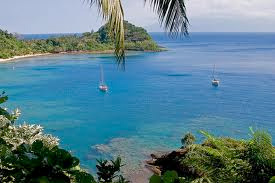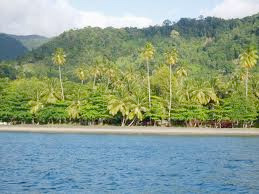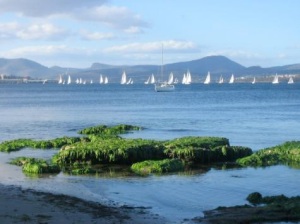10 Green Boating Tips for Cruisers, Alternative Cleansers, Protecting the Waterways
1. Choose Green Products: Look for the EPA-certified “Design for the Environment” (DfE) label, which assures you that the product has minimal environmental impact and is safer for the person using it. Benefit: Safer products. Reduce water pollution.
2. Use The Right Prop: Use a prop with the right pitch so your engine reaches its designed wide-open-throttle RPM. An adjustable-pitch propeller allows you to dial in the optimum pitch angle in single degrees. Modular props, let you swap props while keeping the same hub. Benefit: Reduce fuel consumption, improve performance. [ flexofold.com ].
3. Add Alternative Energy: Solar panels and wind generators are getting more affordable and smarter. Most systems can be self-installed and will reduce your fuel costs significantly. Benefit: Reduce Carbon footprint & Reduce fuel consumption. Go to www.emarineinc.com for good comparison of the two options.
4. Keep The Bilge Clean: Avoid the accidental discharge of oily water by using a sorbent in each bilge area. Consider a bioremediation product designed to convert hydrocarbons into safe compounds. Benefit: Safer products. Reduce water pollution
5. Retire That 2-Stroke Outboard: Although it may be possible to get a few more years out of your old-technology outboard, you’ll be much happier with the reduced noise, fumes, fuel consumption, and pollution of a modern injected four-stroke outboard. For an even quieter ride, try an electric outboard. Benefit: Save gas and reduce water pollution.
6. Recycle your Lead-Acid Batteries: 12V batteries are among the most recycled products in the world. Benefit: Save money and conserve resources. [ earth911.com ].
7. Prevent Fuel Spills: Use or install a device to prevent overboard discharges from your tank vent. Benefit: Save gas and reduce water pollution
8. Use an autopilot: Modern autopilots can steer better than most helmspersons—and they don’t have a limited attention span. Benefit: Reduce fuel consumption
9. Recycle Your Monofilament Fishing Line. If your harbor doesn’t have a recycling location, see the website [ fishinglinerecycling.org ].
10. Eat Responsibly Harvested Seafood: Choose sustainable seafood at a restaurants or grocery stores to ensure that the fish stocks are plentiful for your children and for generations to come. Go to eartheasy.com/eat_sustainable_seafoods.htm for informational guide.
More Tips:
Clean Boating at BoatUS Foundation
Florida Depart of Environmental Protection Agency’s Clean Boating Practices
Vessel Cleaning:
Alternatives to Toxic Products
Product ➛ Alternative
Bleach ➛ Borax
Detergent & Soap ➛ Elbow grease
Scouring Powders ➛ Baking soda, or rub area with one-half lemon dipped in borax, then rinse
General Cleaner ➛ Baking soda and vinegar, or lemon juice combined with borax paste
Floor Cleaner ➛ One cup vinegar in 2 gallons of water
Window Cleaner ➛ One cup vinegar + 1 qt. warm water. Rinse and squeegee
Aluminum Cleaner ➛ 2 Tbsp. cream of tartar + 1 qt. of hot water
Brass Cleaner ➛ Worcestershire sauce, or paste made of equal amounts of salt, vinegar and water
Copper Cleaner ➛ Lemon juice and water, or paste of lemon juice, salt, and flour
Chrome Cleaner/Polish ➛ Apple cider vinegar to clean; baby oil to polish
Stainless Steel Cleaner ➛ Baking soda or mineral oil for polishing, vinegar to remove spots
Fiberglass Stain Remover ➛ Baking soda paste
Mildew Remover ➛ Paste with equal amounts of lemon juice and salt, or white vinegar and salt
Drain Opener ➛ Dissemble or use plumber’s snake, or flush with boiling water + one-quarter cup baking soda + one-quarter cup vinegar
Wood Polish ➛ Olive or almond oil (interior walls only)
Hand Cleaner ➛ Baby oil or margarine
Head & Shower ➛ Baking soda; brush thoroughly
Rug/Upholstery Cleaner ➛ Dry corn starch sprinkled on; vacuum
Protect the Oceans!
According to the Ocean Conservancy, there are five general ways boaters can protect our oceans and waterways, and conveniently enough, each of the five tips starts with a letter that ends up spelling the word “BOATS”.
Be a leader in your community. Talk about marine litter prevention with members of your boating community, from your neighbor in the next slip to boating clubs and marina managers.
Offer your time. Volunteer in boat and marina cleanup programs, especially at sites only accessible by boat. And participate in Ocean Conservancy’s annual International Coastal Cleanup, the largest volunteer effort of its kind for the ocean.
Accidents happen. Be prepared with absorbent pads to clean oil or fuel spills. Dish soap doesn’t work. It just causes those liquids to sink and contaminate the bottom.
Take it all back to shore. Don’t allow cigarette butts to go overboard; small but significant, they are the most prevalent marine litter item found during the International Coastal Cleanup. Dispose of them properly onshore.
Set the pace. Recycle everything you can, from beverage containers to propeller-snarling fishing line or plastic bags.
Read more at the Daily Boater
Of course the greenest thing sailors can do is to just…………Sail!

































